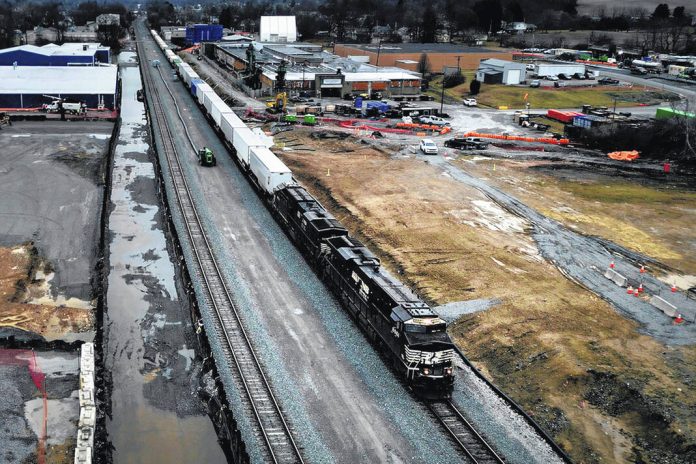EAST PALESTINE, Ohio — Daily life largely returned to normal for most of the nearly 5,000 residents of East Palestine, Ohio, months after a Norfolk Southern train derailed and spilled a cocktail of hazardous chemicals that caught fire a year ago, but the worries and fears are always there.
Some people still report respiratory problems, rashes or headaches, or say they feel ill whenever they return to the village not far from the Pennsylvania border. At least several dozen haven’t returned to their homes, concerned about chemicals like the vinyl chloride that was released and burned when officials blew open five derailed tank cars because they worried the cars might explode.
But others believe the EPA’s findings that their air and water are safe. They say they’re ready to move on and take advantage of all the money the railroad and governments are investing in the area. They don’t want the derailment to define their town.
“We’re going to move forward with our lives,” said Village Council member Linda May.
It’s just harder for some residents to do that.
Misti Allison said that over the past year, her 8-year-old son Blake has asked whether he is going to die from living at their home, or whether one of the really bad nosebleeds he’s started having will ever stop.
“I remember once he jumped in a puddle, and he stopped and looked at me and said, ‘Is vinyl chloride in this puddle?’ And that is just so sad,” said Allison, who testified before Congress last spring about the derailment alongside the railroad’s CEO and later ran unsuccessfully for mayor to try to get the town to focus more on health concerns. “It’s really robbed our children of some of their childhood, and hopefully not more than just that.”
Sam Chirico said she’s still experiencing a rash that her doctors call chemical dermatitis. They’ve prescribed different creams and lotions that don’t seem to work. Steroids did help, but as a diabetic they raised her blood sugar levels too much, so she stopped taking them.
“I’m kind of scarred for life,” Chirico, wearing a shirt that read “East Palestine Strong,” told The Associated Press inside her home just over a mile away from the crash site.
She said she’s careful about talking about her symptoms or posting online about them because “If you say one thing on social media that you got some kind of symptom they would crucify me.”
“Not everybody has a rash like mine, not everybody’s gotten sick or whatever, and that’s great if you haven’t got sick, but be kind because there’s some people that have,” she said.
Experts say it will likely take years and extensive research to understand the derailment’s health implications. They note it’s simply not possible to say yet how many cancers or chronic respiratory conditions might develop down the road.
Dr. Beatrice Golomb said she’s already seen people with symptoms similar to health problems military veterans developed after working around toxic burn pits during the Gulf War, but that it’s hard to predict what might develop in East Palestine because there isn’t good research on the chemicals that spilled.
“We don’t have good data on the individual chemicals and their human impact, and we certainly don’t have good data on the combined impact,” said Golomb, who is based at the University of California San Diego.
Dozens of chemicals spilled and caught fire after 38 cars careened off the tracks on Feb. 3, 2023. Federal investigators have said the derailment was likely caused by an overheated bearing that got as hot as 253 degrees F (122.8 C) above the outside air temperature before trigging an alarm, but the crew didn’t have enough warning to stop the train.
Another early health study being done in town by the University of Kentucky’s Dr. Erin Haynes offers some encouraging results. Haynes said blood tests performed on a handful of residents last summer revealed that none had alarming levels of the cancer-causing dioxins that were feared to be released when the chemicals burned.
EPA Response Coordinator Mark Durno told The Associated Press he’s “feeling pretty confident that vinyl chloride isn’t going to be a trigger for long-term health effects.” But he also knows that some in East Palestine are still having a “crisis of confidence” about the test results because when they first came home after the evacuation they could smell the chemicals officials were telling them weren’t at toxic levels.
Those doubts have only grown through the fall because residents keep seeing a chemical sheen atop the creeks that flow through town anytime they stir up the sediment on the creek bed. Pictures of the rainbow-colored residue atop Leslie Run and Sulphur Run keep popping up on social media pages dedicated to the derailment.







